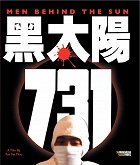Directed by:
Tun Fei MouPlots(1)
Near the end of World War 2, Japan is losing the war so a prison camp is created to test new biological and chemical weapons that might be able to help them win. In order to test these new weapons, the Japanese need to use test subjects, so they capture and use Chinese and Russians as guinea pigs for their cruel and barbaric experiments. The Japanese refer to the test subjects as Maruta, which translates to the word material. We follow the experiments performed on the Maruta by the crazy leader who runs the prison camp and a group of young boys that are enrolled in the camp but they cannot stand to deal with this cruelty. Although all 731 prison camp members disappeared into the darkness and all of the witnesses and records were destroyed, the bloody story of the devil 731 Bacterial Camps marked the immortal history of true and real, cruel and merciless evil. (official distributor synopsis)
(more)Reviews (2)
Men Behind the Sun doesn't stand out much these days, and its significance essentially boils down to two scenes: the first involves an innovative way of removing skin along with flesh, and the second is a scene of vivisection of a child that really shook me. One is accustomed to a lot, but when it comes to children... The film is probably recommendable only to those who like World War II and are convinced that the Japanese were as insane as the Germans. Additionally, it's for those who love explicitness and top-level gore. However, it could surprisingly disappoint even them, due to its ending and the attempt to give it more depth.
()
If it wasn’t for the rather weak use of documentary techniques aiming to generate an aura of real events and push a mythological haze around unit 731 (about which not much is actually known), it could have been a pretty strong film; at least that’s the impression you get from the last scene, which leaves the slimy feeling of an endless chilling silence. But that documentary style is there and it’s the main reason the essence of the message is lost – the historic moral doesn’t look like an end but as a means for a cold portrayal of human depravity that you can’t avoid looking at (though I recommend closing your eyes in at least three scenes – the one with the “bare” hands chilled me like probably nothing ever before). We are not given the chance to relate to any of the characters (and we should, because the core should be the rebellion of the young and innocent recruits) and the only thing you’ll remember is some bits and pieces, which are not lacking strength, but their effect comes mostly from the cruelty and the very convincing visual effects (and I have reasons to believe some of them were not actually effects, according to the director, the autopsy of the little boy was real and I refuse to believe the cat being eaten by hundreds of rats was faked). It’s not a pleasant film, but not in the way it should be. 40%
()

Ads